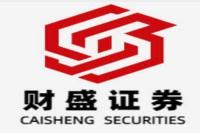Revitalizing Our Cities: A Deep Dive into China's Old Neighborhood Renewal Program
Meta Description: This comprehensive guide explores China's ambitious program to renovate aging urban neighborhoods, analyzing progress, challenges, and the impact on residents' lives. Discover the benefits, key initiatives, and future outlook for this transformative project.
Imagine stepping into a bustling neighborhood, filled with vibrant shops, buzzing with activity, and radiating a sense of community. Now, imagine that same space, but faded, worn, and lacking the essential amenities of modern life. This is the reality facing many of China's aging neighborhoods, remnants of a bygone era. However, a transformative initiative is underway – a nationwide revitalization program aimed at breathing new life into these forgotten urban spaces.
This program is not just about cosmetic upgrades; it's about enhancing the quality of life for millions of residents. It's about creating inclusive, sustainable, and vibrant urban environments for generations to come. This article serves as a comprehensive guide, delving into the complexities of this ambitious undertaking, exploring its successes, challenges, and future implications. We will examine the key factors driving this revitalization, analyze the program's impact on residents' lives, and shed light on the long-term vision for China's urban landscape.
The Driving Force: A Need for Urban Renewal
China's rapid economic development has led to unprecedented urbanization, transforming the country's landscape. Yet, this growth came at a cost. Many older neighborhoods built in the 1970s and 80s lacked essential infrastructure, modern amenities, and the aesthetic appeal of newer developments. These aging neighborhoods faced issues such as:
- Deteriorating Infrastructure: Outdated plumbing, electrical systems, and roads posed safety hazards and hindered daily life.
- Limited Amenities: Insufficient green spaces, inadequate public transportation, and a lack of recreational facilities hampered quality of life.
- Aging Housing Stock: Many buildings required major repairs or even complete renovation, impacting housing standards and resident well-being.
- Social and Economic Challenges: These neighborhoods often housed vulnerable populations, facing limited job opportunities and social services.
The government recognized the urgent need to address these issues, not just to improve living conditions, but to create a more sustainable and equitable urban environment. The renewal program was born out of this necessity, aiming to tackle the challenges head-on and build a brighter future for these neighborhoods.
A Multi-faceted Approach: Key Components of the Program
The urban renewal program is not a one-size-fits-all approach. It's a comprehensive strategy that utilizes a combination of strategies to revitalize neighborhoods effectively. Here are some key components:
- Infrastructure Upgrades: Replacing outdated plumbing, electrical systems, and roads with modern, efficient infrastructure. This includes improving public transportation, pedestrian walkways, and street lighting.
- Housing Renovation: Rehabilitating existing buildings, upgrading building facades, and improving energy efficiency. This can also involve constructing new affordable housing units to meet growing demand.
- Green Space Development: Creating parks, gardens, and green corridors to enhance the aesthetic appeal of neighborhoods, provide recreational opportunities, and improve air quality.
- Public Amenities: Building community centers, libraries, healthcare facilities, and other essential amenities to cater to residents' diverse needs.
- Community Engagement: Actively involving residents in the planning and implementation process to ensure their needs are met and their voices are heard.
This multifaceted approach ensures that the program addresses all aspects of neighborhood life, from physical infrastructure to social well-being.
Progress and Impact: A Glimpse into the Transformation
The program has made significant strides since its launch, with thousands of neighborhoods undergoing transformation. The impact is evident in various aspects:
- Improved Living Conditions: Residents are experiencing tangible improvements in their daily lives, with safer and more comfortable living spaces, access to modern amenities, and a revitalized sense of community.
- Enhanced Quality of Life: The program has created vibrant public spaces, improved air quality, and promoted healthy lifestyles, leading to a noticeable increase in residents' quality of life.
- Economic Boost: The revitalization process creates jobs, attracts new businesses, and stimulates economic activity in the surrounding areas, contributing to overall community prosperity.
- Social Inclusion: The program prioritizes the needs of vulnerable populations, ensuring access to affordable housing, social services, and opportunities for social mobility.
Challenges and Opportunities: Navigating the Path Forward
Despite the progress, challenges remain:
- Funding: The program requires significant financial investment, and securing sufficient funding remains a challenge.
- Relocation: Displacing residents during renovation can be disruptive and require careful planning to minimize inconvenience.
- Community Engagement: Ensuring effective communication and collaboration with residents is crucial to address their concerns and foster a sense of ownership.
- Sustainability: The program needs to be sustainable in the long term, with mechanisms in place for ongoing maintenance and management.
However, these challenges also present opportunities:
- Innovation: The program can leverage technology and sustainable practices to create smarter and more resilient urban environments.
- Public-Private Partnerships: Collaborations with private sector companies can help leverage resources and expertise, promoting innovation in urban development.
- International Collaboration: Learning from best practices in urban renewal projects worldwide can enhance program effectiveness and promote knowledge sharing.
Looking Ahead: A Sustainable Future for China's Cities
The urban renewal program holds immense potential for transforming China's urban landscape, creating more livable, sustainable, and inclusive cities. Here's a glimpse into the future:
- Smart Cities: Integrating technology to improve efficiency, enhance public services, and promote sustainable living.
- Green Cities: Emphasizing green spaces, sustainable infrastructure, and reducing the environmental footprint of urban development.
- Inclusive Cities: Prioritizing accessibility, affordability, and opportunities for all residents, creating a more just and equitable urban environment.
The program serves as a testament to China's commitment to sustainable development and improving the lives of its citizens. It's a journey that's constantly evolving, adapting to new challenges and opportunities, with the ultimate goal of creating vibrant and thriving urban communities for generations to come.
FAQs
Q: How is the government funding this massive program?
A: The program is funded through a combination of central and local government budgets, as well as public-private partnerships. The government aims to leverage resources effectively and incentivize private sector involvement to maximize funding.
Q: What happens to residents who live in the neighborhoods being renovated?
A: The program prioritizes resident well-being and minimizes disruption. Residents are often relocated to temporary housing during renovation, with options for returning to their original homes or moving into newly built units. The government provides financial assistance and support during this process.
Q: How does the program address the concerns of residents during the renovation process?
A: Community engagement is a crucial aspect of the program. Residents are consulted throughout the planning and implementation phases, providing feedback and ensuring their needs are met. Public hearings and community forums provide platforms for residents to voice their concerns and influence decision-making.
Q: What are the long-term plans for maintaining the revitalized neighborhoods?
A: The program emphasizes sustainability, establishing mechanisms for ongoing maintenance and management. This includes setting up community-based organizations to oversee the upkeep of public spaces, ensuring continued access to essential services, and fostering community ownership of the revitalized neighborhoods.
Q: What are the implications of this program for China's overall urban landscape in the future?
A: The program has the potential to transform China's urban landscape, creating a more livable, sustainable, and equitable urban future. It paves the way for smart cities, green cities, and inclusive cities, ensuring that urban development benefits all residents and contributes to a brighter future for all.
Q: What are some examples of successful urban renewal projects in China that serve as inspiration for this program?
A: The program draws inspiration from successful urban renewal projects across China, such as the revitalization of Shanghai's Xintiandi district, which transformed a historic neighborhood into a vibrant cultural hub. This, along with other initiatives, demonstrates the powerful potential of urban renewal to create thriving and sustainable urban communities.
Conclusion
China's urban renewal program is a testament to the country's commitment to improving the lives of its citizens and creating a more sustainable and equitable future. It's a journey that's constantly evolving, adapting to new challenges and opportunities, and showcasing the transformative power of urban revitalization. This program not only enhances the physical environment but also fosters a sense of community, empowers residents, and builds a brighter future for China's urban landscape.



